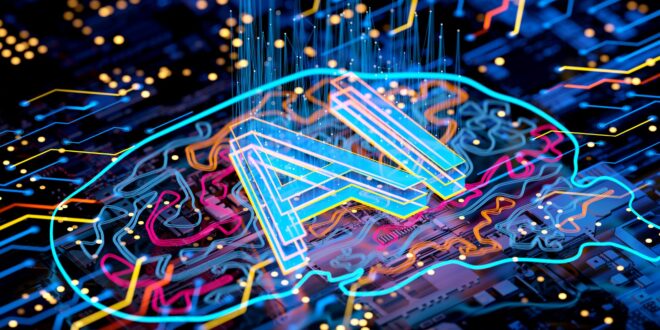Artificial intelligence is the latest buzz—geeky stuff that can improve energy efficiency, productivity, and outcomes. But it is a fledgling concept, making room for errors. And that’s why the smart move is to test a problem and simulate solutions, sharing the best outcomes industrywide.
Artificial intelligence — or AI for short — gives companies a holistic view and gathers data to improve productivity, limit expenses, and reduce environmental costs — a process now possible because of bandwidth capacity and cloud technologies. AI can develop algorithms and thus eliminate repetitive tasks. Managers can therefore increase productivity and minimize costs, allowing them to be globally competitive.
Consider the massive adoption of renewables and its effect on the electricity network — the most sophisticated machine ever invented: adding intermittent resources to it makes delivery more complex, compounded even further by pouring on electric vehicles and battery storage.
“If we want humans to do that, we’re going to need many, many, many more of them, to the point where it would not make economic sense. However, suppose we can utilize these technologies properly. In that case, it can help us to manage a very complicated grid to provide low-cost, decarbonized energy to everyone,” says Jeremey Renshaw, senior technical executive for the Electric Power Research Institute.
Renshaw, who spoke at the United States Energy Association’s virtual summit on AI where this reporter was a panelist, adds that the technology permits grid operators to make critical decisions in real-time. For example, the utility industry can gather hundreds of thousands of pictures of the transmission and distribution system — used to create algorithms that incorporate data and offer solutions.
AI eliminates “mundane activities,” so those running heavy industrial operations can solve problems and improve performance, which translates into more profitable enterprises. As for power plants, the technology can help managers balance supply and demand issues, maintain their plants, and improve safety measures.
How Dependable Are The Algorithms?
In other words, the machines run through innumerable scenarios and memorize all potential patterns — something people cannot do. The algorithm takes the data and updates it as circumstances change. When this power combines with cloud computing and high-speed 5G networks, companies can leverage the intelligence and get a competitive advantage.
According to McKinsey & Company, AI and digitization can increase asset productivity by up to 20% while reducing maintenance costs by 10%.
AI can also predict weather patterns, enabling grid operators to accurately gauge when wind and solar resources are available. The network is, therefore, more reliable.
Marc Spieler, head of global business development for Nvidia, told the audience the technology can accurately and effectively simulate weather and climate forecasts. The practical effect is to maximize wind and solar resources — and know where to locate them — not just currently but also 10 to 20 years out. System planners use that information to design the necessary infrastructure.
“We can get an accurate representation of the future climate,” he says. However, “I don’t anticipate we’ll see many autonomous operations without humans in the loop.”
Where’s the Manager?
To be sure, AI is not foolproof. Its responses are mathematical —algorithms devised by humans. Something unforeseen may happen: earthquakes, solar flares, or wildfires, requiring a real person to intervene and make decisions. Those events can cause widespread blackouts, putting lives in danger.
If an adverse event occurs, who or what is at fault: the algorithm’s designers, the energy company that relied on artificial resources, or the individual on the scene managing the problem? Companies must adequately train managers to make informed decisions because the grid is so complex. As the economy decarbonizes and runs on more electricity — wind and solar power — the network must expand and have the intelligence to redirect electrons to avoid congestion or trouble spots.
Daniel Robertson, senior director of innovation at Landis + Gyr says it is analogous to automated vehicles. In that case, the chain of potential liability stretches from the carmaker to the technology developer to the car driver.
“We have a complex and sensitive system that should not be fully entrusted to an AI system,” adds John E. Savage, Wang Professor Emeritus of Computer Science at Brown University. “If a scenario has not been planned for, and you don’t have a human in the loop, you’re in trouble. AI is a very powerful and useful tool. It’s increasing productivity everywhere, and we will live with it for the rest of our lives. But, on the other hand, we also need to understand the risks it presents.”
That is well said — especially true for the energy sector, which provides the foundation for human existence and economic progress. In the United States, the sector made up 4.8% of the gross domestic product. AI has enormous potential and pitfalls, compelling the corporate world to tread thoughtfully.

 Iran Energy News Oil, Gas, Petrochemical and Energy Field Specialized Channel
Iran Energy News Oil, Gas, Petrochemical and Energy Field Specialized Channel



